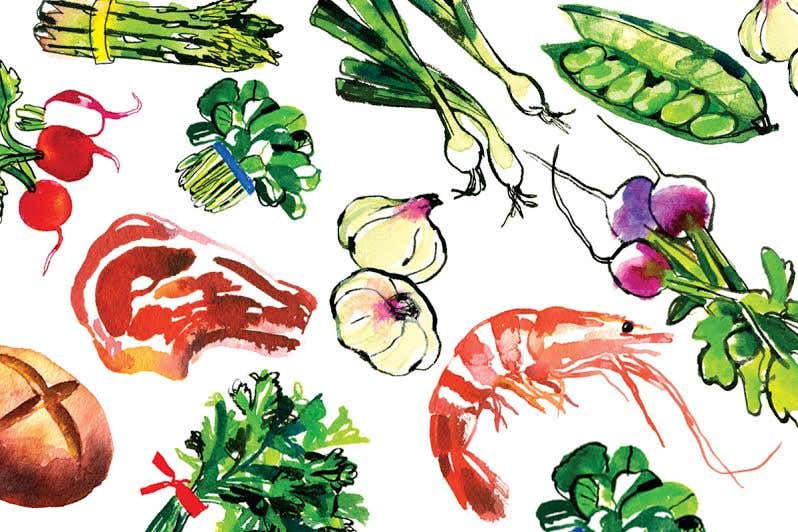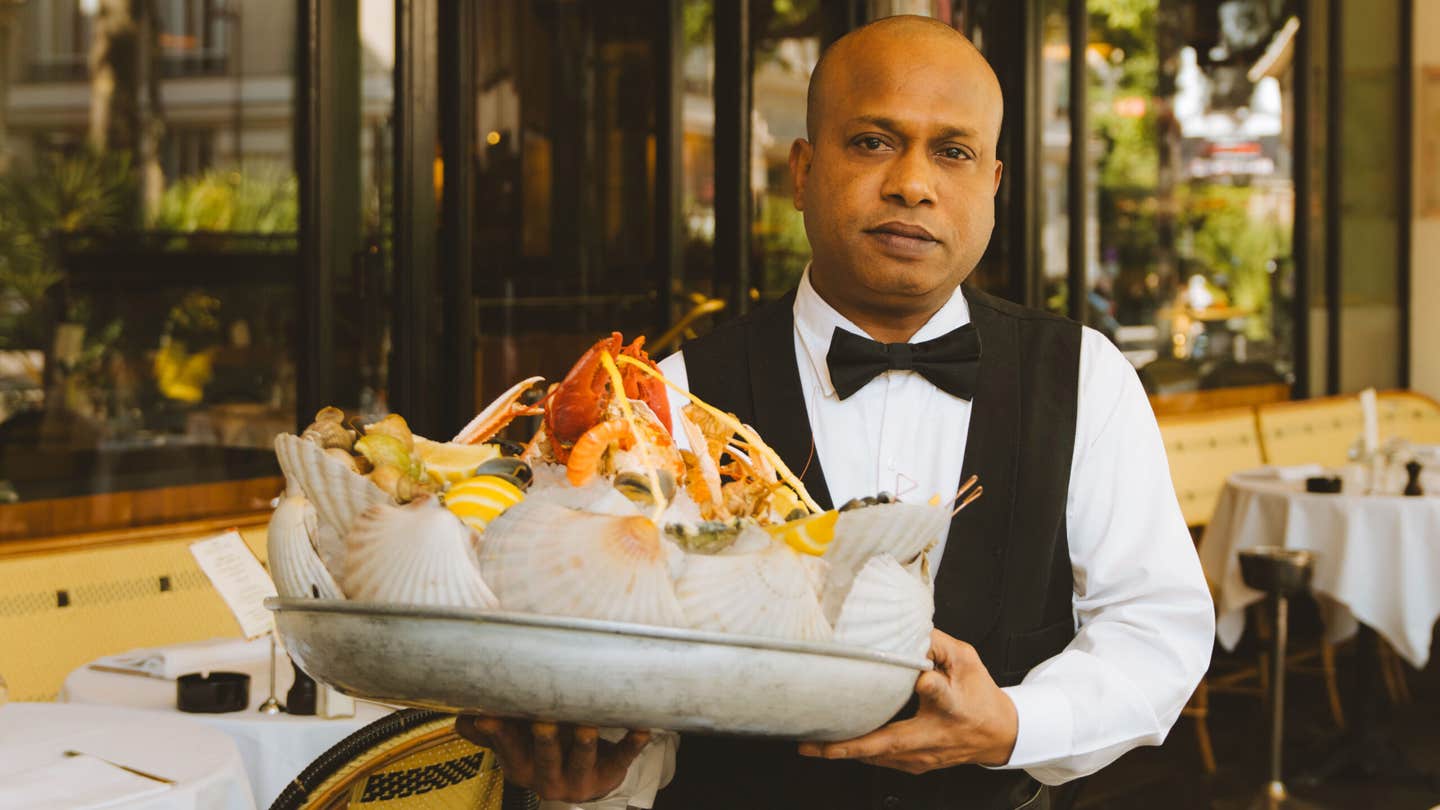
Five Fabulous Books
Here are five of our favorite winter books—terrific reads, whether you're in the kitchen or your favorite armchair.
Into the Vietnamese Kitchen: Treasured Foodways, Modern Flavors
Andrea Nguyen (Ten Speed Press)
Author Andrea Nguyen, a frequent contributor to SAVEUR, was six years old in 1975 when she and her family were airlifted from her native Saigon a few days before the city fell to the North Vietnamese army. Her mother, a dedicated home cook, packed light: a couple of packets of instant noodles and a notebook filled with handwritten recipes were among the few items that she took along with her. That notebook, which she gave to her daughter a few years back, became the inspiration for this smart, soulful collection of Vietnamese recipes. Aficionados of the country's cooking will find all of its cornerstone dishes represented here, from phở bo (beef phở), the succulent breakfast noodle soup seasoned with star anise and cinnamon, to banh xeo (sizzling crepes), savory rice-flour pancakes that get their local name from the "ssssseh-ao sound that the batter makes when it hits the hot skillet". Those less familiar with the cuisine will gain easy entry into its whys and wherefores, learning, for instance, how to identify key herbs (including red perilla and culantro) and how to make nước mau, a signature (though potentially challenging to prepare) caramel sauce that is brilliantly deconstructed here for the Western cook. The best part, though, is the way in which Nguyen subtly infuses the volume with her mother's presence. You feel her homespun wisdom resonating on every page of this quietly remarkable book. —James Oseland
Blithe Tomato: An Insider's Wry Look at Farmers' Market Society
Mike Madison (Great Valley Books)
Mike Madison is a rare find: a person who possesses both the pragmatism required of a farmer and the keen eye for flawed human nature required of a humorist. The book that Madison, who operates a farm in California's Sacramento Valley, has written is proof that it's an irresistible combination. In documenting the arduous and sometimes oddball life of small-scale farmers, Madison introduces us to a cast of characters with whom I instantly fell in love: a farmer named Dan who is obsessed with apricot pits; Margot, a farm owner who conceives a child with an 18-year-old migrant worker; and Ulf, who is described as a Zen master of collard greens. In sketching these lively figures, Madison manages to discuss everything from the painter Pieter Brueghel to the merits of using a scythe as compared with a sickle, and he exhibits a singular talent for choosing just the right words—when you read his comparison of the sex life of humans to that of gophers, you'll understand. Quiet, whimsical drawings by Patrick McFarlin and an introduction by Madison's sister, Deborah, a SAVEUR consulting editor, add another dimension to this rich portrait. Putting the book down, I had to resist the urge to run off with the farmers. —Liz Pearson
Molecular Gastronomy: Exploring the Science of Flavor
Herve This (Columbia University Press)
What's the best way to cook pasta? Are gnocchi really done when they float to the top? What makes cheese good? These are a few of the hundreds of questions tackled by French chemist Herve This (pronounced teess) in this extravagantly researched book, a must-have for gourmands everywhere. "Testing such questions experimentally is a simple matter," the author writes, "but we are rarely willing to go to the trouble." Luckily for us food geeks, This has done just that. (By the way, the answers to the foregoing questions are, respectively: in a rich broth; no; and … well, go to chapter 59.) The author's analyses are exhaustive and, to the less chemistry-minded reader, sometimes exhausting. Take, for instance, the hotly debated question of how to season a steak. Do you salt it before, during, or after cooking? This conducts a sober inquest, employing, among other things, an electron microscope and a chemical element-detecting device. The verdict? It makes no discernible difference when you salt your steak. I have to admit that I heaved a sigh of relief. This book, praiseworthy for its scientific rigor, will hold special appeal for anyone who relishes the debunking of culinary myths—of those "old wives' tales … that weigh us down when they are false and … carry us aloft when they are true". —Todd Coleman
Joy of Cooking: 75th Anniversary Edition
By Irma S. Rombauer, Marion Rombauer Becker, and Ethan Becker (Scribner)
Few books are as indispensable in the American kitchen as Joy of Cooking, and this latest edition is perhaps the best incarnation yet of what has become an American institution. And to think: when Irma S. Rombauer self-published The Joy of Cooking: A Compilation of Reliable Recipes with an Occasional Culinary Chat in 1931, she mostly wanted to provide her children with a written record of their favorite dishes. Over the years, the book has grown in size and scope (the earnest subtitle eventually dropped off), and now this collection of recipes and methods, with its concise illustrations and lucid descriptions, is still a model of accessibility and thoroughness. As have past editions, this one has been updated and amplified to make it reflect contemporary cooking practices while retaining tried-and-true recipes from earlier editions. Classics from the 1960s, like chicken kiev, have been revived, and an extensive chapter on cocktails contains both contemporary concoctions and classics that hark back to the editions of the late 1940s. I was delighted to find a few of the tea sandwich recipes my grandmother loved. While some sections, like those on making cheese and canning, may be impractical for some people, overall Joy of Cooking has remained utterly true to its name. —Georgia Freedman
Mrs. Rowe's Restaurant Cookbook: A Lifetime of Recipes from the Shenandoah Valley
Mollie Cox Bryan (Ten Speed Press)
What is real roadside comfort food? Mildred Rowe would have told you that it's more than just gravy; it's the gritty story behind the cooking. Appropriately, this weird and wonderful cookbook is in essence a biography of Mildred Craft Rowe, who ran the famous namesake restaurant located off I-81 in Staunton, Virginia, for more than 50 years, until her death, in 2003. As a single mother in 1947, during the glory days of the roadside restaurant, Mildred scraped together enough money to open a little luncheonette; now, more than half a million people a year dine at the roadhouse she later built. The fabulous photos that accompany the story and the recipes—witchy-looking waitresses in cat-eye glasses, old men's rear ends on counter stools, fat hands cutting Virginia country ham—are far from quaint, and for that very reason they are righteous sights in this age of packaged cookbooks. Mildred's Appalachian aphorisms—like "Lard is a gift from God"—are hilarious, and I'm a fool for the recipes: mostly toothsome standards like chicken and dumplings, chipped-beef gravy, candied yams, and banana pudding. Most of all, I love that this book captures the real meat of life, not just its gravy. —Lily Binns
Keep Reading
Continue to Next Story










